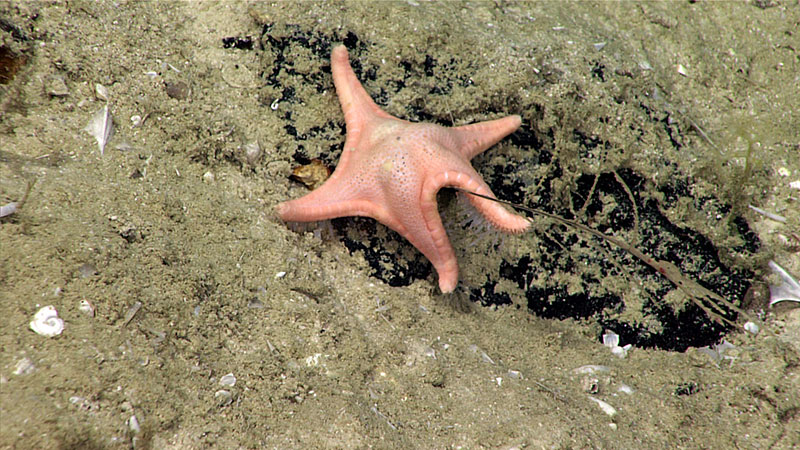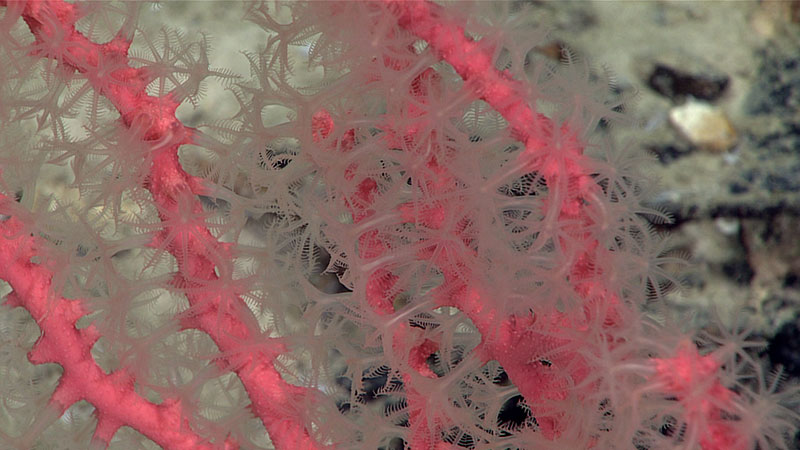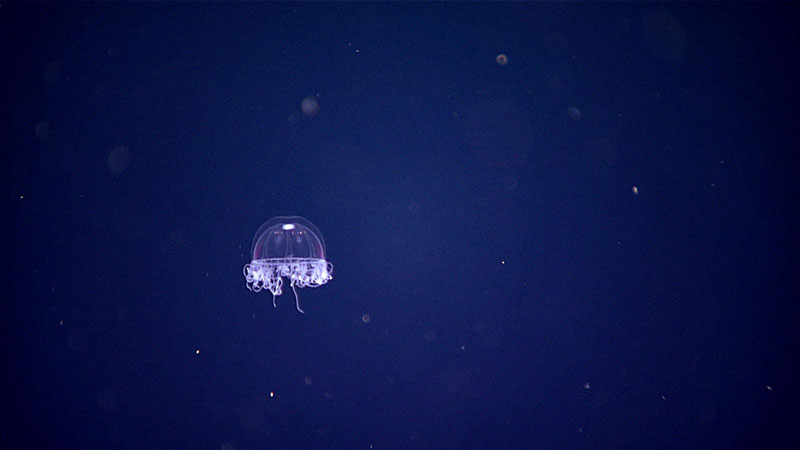Dive 13 surveyed the biology and geology of a previously unexplored narrow ridge feature in the southern end of the Western Florida Escarpment at depths between 2,100-2,250 meters (6,890-7,380 feet). The closest historical dive to this site was conducted over 50 kilometers (~31 miles) away. Near the landing spot, the seafloor was flat and heavily sedimented at 2,240 meters (~7,350 feet) depth. Scattered boulders and low outcrops had branching corals and sponges attached. Further upslope were large outcrops of exposed carbonate rock, covered with black ferromanganese oxide, with patchy, clustered coral and sponge communities. Sediment, populated with sea stars and glass sponge stalks, separated the outcrops; there was minimal evidence of bioturbation. As remotely operated vehicle Deep Discoverer (D2) headed to the peak of the ridge, the seafloor was sedimented for remainder of the dive. Man-made debris (bottles and cans), isolated sponges, sea stars, and sea pens were observed on the sediment surface. Toward the end of the dive, large sediment mounds and deep gouges were observed on the seafloor – the color of the sediment indicated some mounds and gouges were recently excavated. The gouges were similar in size and shape to those that have been hypothesized to be caused by feeding of beaked whales in other locations.
On the heavily sedimented slopes, Nematocarcinus ensifer shrimp, Protoptylum sp. seapens, and Hyalonema sp. sponges – often overgrown by stoloniferan octocorals, zoanthids, and hydroids – were occasionally observed. A single urchin (Echinothuridae) was also seen in the sediment. The rocky outcrops, however, hosted diverse communities of corals, including bamboo corals, plexaurids, bubblegum corals, corallids, black corals, stolonieferans, chrysogorgids, and anthothelids. Other animals by the outcrops included glass sponges, sea stars, anemones, squat lobsters, crinoids, bryozoans, benthic ctenophores, and barnacles. A goniasterid sea star, possibly Circeaster sp. or Sibogaster sp., was seen feeding on a Bathypathes sp. black coral. This is the first time a sea star has ever been recorded feeding on a black coral. Fish recorded near the seafloor included tripod fishes, cusk eels, halosaurs, a deep-sea lizardfish, and a rattail (Coryphaenoides sp.).
D2 then conducted midwater transects for the remainder of the dive, targeting depths of just above the seafloor at 2,116 meters (~6,942 feet), 900 meters (~2,950 feet), 600 meters (~1,970 feet), and 300 meters (~985 feet). Animals observed during the midwater portion of the dive included ctenophores, polychaetes, siphonophores, salps, and larvaceans.


